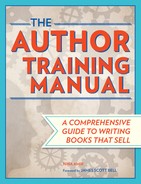STEP #3: ANALYZE HOW MANY PEOPLE REALLY MIGHT BUY YOUR BOOK
Goal: Create a market description and analysis to evaluate if your book has selling potential.
Can You Describe Your Market?
1. Exercise: Describe the audience, or large, general target market for your book, such as dog owners, people with cancer, romance readers, memoir readers, people interested in stories about Italy, entrepreneurs, technical or business people, etc. Describe as many broad audiences as you can.
You Need Actual Figures to Determine the Size of Your Market
2. Exercise: Describe your market specifically using statics or numbers to indicate its size. Find figures for your specific market and add them here. (Wrong: People like me. People who like cats. Right: The 1.3 million cat owners in the United States. The 80,000 veterinarians licensed in the United States today; 20 million people with cancer; half of the U.S. population; 4.5 million dog owners.) To find the information you need to describe your markets, try researching in the following places:
• U.S. Census Bureau
• Associations and organizations related to your topic
• Newspapers and magazines
• Blogs
• Manufacturers
• Wikipedia (with accompanying source)
• Search engines (Google, Yahoo, Bing, etc.)
3. Evaluation: Does the idea for your book have a market or a market big enough to justify writing your book? Does it appear that you can sell enough books to your audience to earn back the costs of producing your book? Consider what type of publisher you would like to approach; each publisher will have a different requirement for market size—large publishers, larger markets. If you self-publish, you determine this.
Re-Angle Your Market for Success
4. Exercise: Think about how you planned to angle your book. Rewrite those angles here as a reminder. Does your current angle and theme hit your target market? How so?
5. Evaluation: Could you angle your book differently to include a different theme in an effort to increase the size of the markets you plan to target, thereby increasing the sales potential for the book and, therefore, its marketability? If so, how? Would it be better to aim for a niche market? If so, why? Could you write your book in such a way that it hits the best market, the one that makes your book the most viable—that makes it possible to sell the most books? Describe that in your journal.
Write for Your Market
6. Exercise: Create a profile of your ideal reader. Describe your reader in detail—as if you were creating a character in a novel. Determine your reader’s demographics. Figure out where your reader lives, what she buys, what she does in her free time, how much she earns, etc. (Here is a post by Darren Rowse of Problogger about profiling readers: www.problogger.net/archives/2009/09/26/how-to-create-reader-profilespersonas-to-inspire-and-inform-your-blogging/)
7. Exercise: Discover where your ideal reader actually hangs out. Where can you find these people—online and offline? Google social-networking sites. Hang out in the places your readers hang out. Listen in on conversations. Ask questions. Get to know them. Go to meetings and events. Here are some examples of sites you might find:
• sermo.com (for doctors)
• therapynetworking.com (for therapists)
• catster.com (for cats)
• Goodreads.com (for readers)
• Redroom.com (for writers)
• Meetup.com (for anything)
8. Exercise: Listen in on conversations held on the blogs or social-networking sites of authors of similar or competing books. “Cyber-spy” on those authors’ fans to find out who they are. Go to their Face-book pages and Twitter accounts. See if you can find them in other forums. Read their blogs. Discover who they are and what they like. Add this information to your ideal reader profile. See if authors of similar books talk about their readers and describe them. Add this information to your ideal-reader description.
9. Evaluation: Does what you discovered in the last few steps make you think of any other markets for your book? What additional information does it give you about your readers? Does this change your idea, angle, or theme? If so, how? If not, why?
10. Exercise: Make a list of ten things you now know about your readers that you didn’t know before. How will you use this information to improve your book’s content or story?
11. Exercise: With all the information you have on your reader, write a target-market paragraph below, as you might if you were submitting a formal book proposal. Use all of the research and insights you gained in this section to write a clear, direct assessment of your target audience. Include figures to outline your large and niche markets. If you have more than one market, do this for each market.
